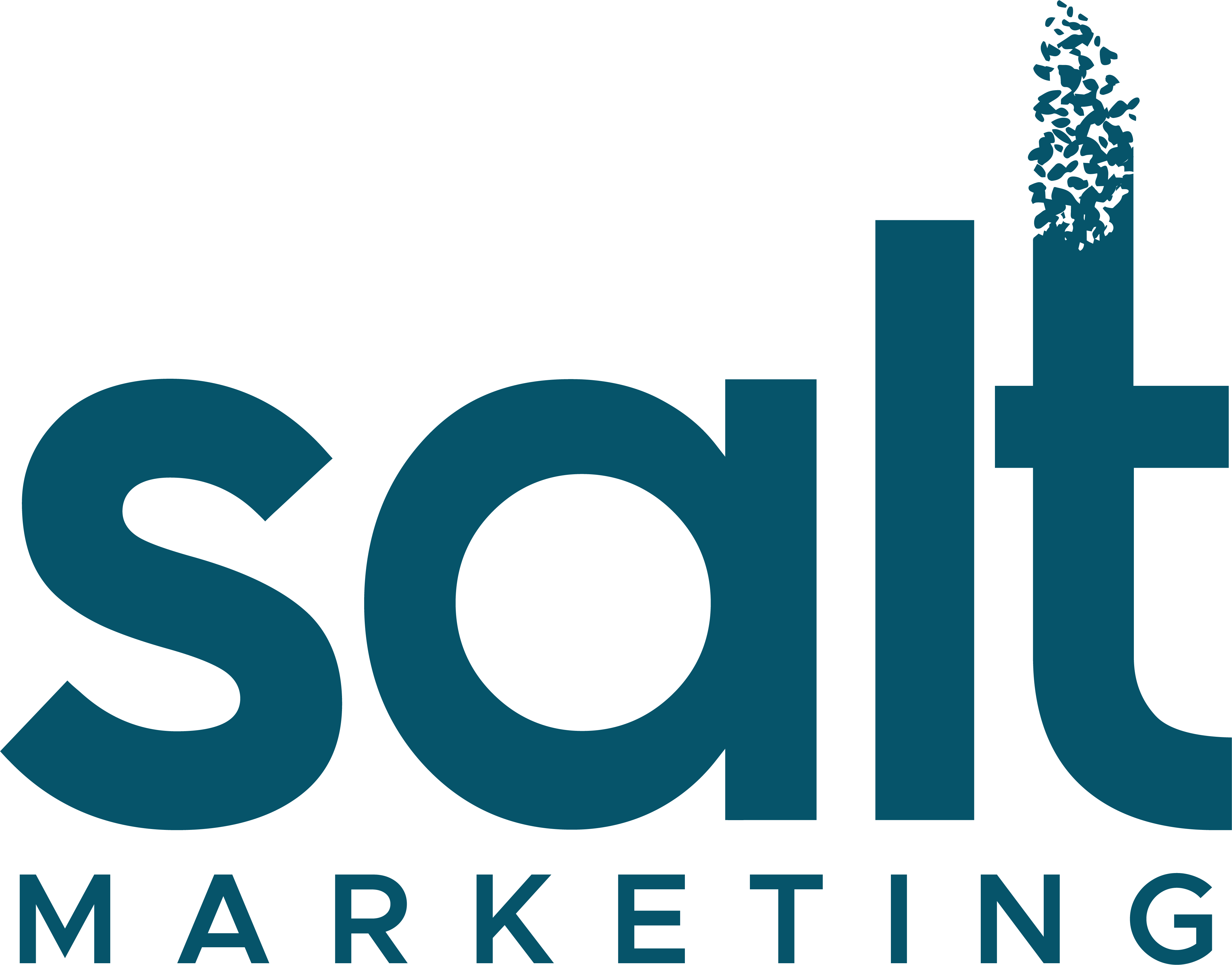Creating compelling and authoritative content is essential for achieving online visibility and driving organic traffic to your website. At Salt Marketing, we understand the pivotal role SEO (Search Engine Optimization) plays in content creation, serving as the cornerstone of our content development strategy. In this comprehensive guide, we will delve into the intricate process of crafting SEO-driven content that not only resonates with your audience but also establishes your brand as an industry authority. Our step-by-step breakdown of the Salt Marketing content brief will illuminate how we harness the power of SEO to create impactful and engaging blog posts, empowering you to elevate your content strategy and boost your online presence effectively.
Identify Your Goals
Identifying your goals before crafting a blog post involves delineating the central thesis and overarching purpose of the article. It's about defining the article's raison d'être—is it intended to inform, entertain, engage, or perhaps to nurture leads? Clarifying these objectives not only sharpens the writer's focus but also guides the entire tone, structure, and direction of the piece - which is central for a good SEO content writing strategy. Articulating the questions you aim to answer within the article aligns the writer's efforts, pinpointing the destination they're striving to reach. Whether it's providing valuable insights, offering entertainment, attracting a broader audience, or cultivating potential leads, setting these goals acts as a compass, steering the writer toward delivering content that precisely hits the mark and resonates with the intended audience. This clarity ensures that every aspect of the article serves the defined purpose, creating content that is purposeful, impactful, and effectively meets the readers' needs.
Identify Your Target Audience
Identifying your target audience in SEO copywriting is pivotal to the success of your content strategy. Who constitutes the ideal reader of your article within the realm of SEO copywriting? It's about understanding not just the demographics but also the specific interests, pain points, and search intent of your audience. By honing in on this crucial aspect, you're sculpting your content to resonate profoundly with those who are actively seeking the information you're providing. Understanding your ideal reader in SEO copywriting involves delving into their behaviors, preferences, and the specific queries they're typing into search engines. It's about crafting content that speaks directly to them, addressing their needs, and aligning seamlessly with their search intent. This focus allows for the creation of content that not only ranks well but also engages and satisfies the audience, driving valuable traffic and conversions.

"They Ask, You Answer" Big 5
At Salt Marketing, our SEO content writing strategy follows the foundational principles outlined in the transformative book "They Ask, You Answer." This methodology centers on addressing the pivotal "Big 5" topics that resonate deeply with our audience, aligning our content with one of these fundamental pillars:
- Pricing and Costs
- Problems
- Versus and Comparisons
- Reviews
- Best in Class
These themes not only cater to the explicit queries our audience may have but also anticipate their needs, ensuring our content remains comprehensive and informative within the realm of SEO content writing. By elucidating pricing structures, tackling common problems, comparing solutions, offering in-depth reviews, or showcasing best-in-class practices, we maintain our commitment: to empower our audience with sought-after knowledge while establishing trust and loyalty through valuable, transparent, and solution-driven content.
Keyword Rich Title
Crafting a keyword-rich title is more than just incorporating your primary keyword; it's about understanding your audience's intent and tapping into their curiosity. By empathizing with your readers, you can anticipate their needs and address the burning questions lingering in their minds. A well-crafted title not only includes the primary keyword for SEO purposes but also resonates with the reader, enticing them to explore the topic further. When your title aligns with what your audience is seeking, it acts as a beacon, inviting them to engage with your content eagerly. It's the gateway that sparks excitement and anticipation, compelling them to delve deeper into the subject matter you're presenting. This ensures that your content not only ranks well but also genuinely captivates and fulfills the needs of your audience, establishing trust and authority within your niche.
Headings
Crafting effective headings within a blog post is crucial for your SEO content writing strategy and involves more than just organizing content; it's about creating a seamless journey for the reader. At Salt Marketing, we adhere to a structured hierarchy, ensuring clarity and flow throughout our articles. This begins with the understanding that each article should feature only one H1 heading, setting the primary topic or main idea for the entire piece. Subsequently, the rest of the keyword-rich headings—H2's, H3's, and so forth—follow a hierarchical structure that reflects a traditional outline format. This means H2 headings provide overarching sections within the content, while H3 headings nest within H2s, delving into more specific subtopics, and so on. This hierarchical arrangement ensures a logical progression, preventing confusion or disjointedness within the article. By respecting this outline format, we maintain a cohesive and reader-friendly structure, allowing our audience to navigate the content effortlessly while grasping the main points and their associated details in a logical order.
Internal & External Linking
The strategic integration of internal and external linking plays a pivotal role in enhancing content value and search engine optimization. Internal linking within your content fosters a robust site structure, connecting related articles or pages, thereby guiding readers through a seamless navigation experience. These internal links not only facilitate easier access to valuable information but also distribute the authority and ranking power across your website. Similarly, external linking to reputable and relevant sources serves as a validation of your content's credibility and authority. By linking to authoritative external sources, you not only add depth and validation to your content but also contribute to building a network within your niche, fostering relationships and potentially gaining backlinks in return. Balancing internal and external linking in SEO content writing not only enhances user experience but also signals to search engines the depth, credibility, and relevance of your content, ultimately contributing to improved rankings and increased visibility.
Word Count
Google's stance on word count for blog articles has evolved over time, emphasizing quality and relevance over sheer quantity. While there isn't a specific word count mandate from Google, the advice leans towards creating comprehensive, in-depth content that thoroughly covers the topic. The focus is on providing value to the reader by addressing their queries comprehensively. Google's algorithms tend to favor content that offers depth, addresses a wide array of related subtopics, and thoroughly satisfies user intent. However, this doesn't imply that longer articles always rank better. Rather, the emphasis is on meeting user needs effectively. Shorter articles that provide concise, precise, and authoritative information can also rank well if they perfectly answer a specific query. Ultimately, Google advocates for content creators to prioritize relevance, accuracy, and usefulness, tailoring word count to match the depth necessary to deliver the best possible user experience.
Mastering the art of SEO content writing involves a meticulous blend of strategic elements, from crafting keyword-rich headings and identifying target audiences to integrating internal and external linking seamlessly. At Salt Marketing, we understand the nuances of this craft, leveraging these techniques to create compelling, authoritative content that resonates with readers and ranks well on search engines. Whether you aim to inform, entertain, or nurture leads, our approach centers on delivering value while aligning with your goals.
Ready to elevate your content strategy? Let Salt Marketing be your guide to unlocking the potential of SEO-driven content. Get in touch with us today at grow@saltmarketing.co and embark on a journey towards content excellence that drives results.


